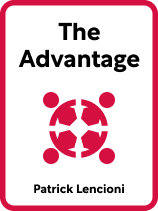

This article is an excerpt from the Shortform book guide to "The Advantage" by Patrick Lencioni. Shortform has the world's best summaries and analyses of books you should be reading.
Like this article? Sign up for a free trial here.
What are the different types of meetings at work? How can these meetings improve employee performance?
In his book The Advantage, Patrick Lencioni explains that you must maintain organizational health by having effective meetings. In these meetings, the organization’s values and success strategies must be used to solve problems, achieve goals, and progress the organization.
Let’s look at the four types of meetings at work that your leadership team should have regularly.
#1: Daily Meetings
One of the types of meetings at work that you should implement is daily meetings. Every morning for five to 10 minutes, the team should meet to share any relevant administrative information like scheduling issues or important events. This will solve small problems quickly and ensure that everyone’s in the loop while saving time that’s usually spent emailing back and forth or playing phone tag.
(Shortform note: Lencioni’s concept of daily meetings is commonly used in the software development world. Such meetings are referred to as “stand-up” meetings. Experts add a few tips to Lencioni’s advice on how to keep these quick, daily check-in meetings effective: (1) Schedule a daily time for the meeting and stick to it. (2) Have a clear leader. (3) Make sure the meeting doesn’t exceed 15 minutes (in contrast to Lencioni’s 10-minute mark). (4) Note important side conversations that arise so you can discuss them later.)
#2: Weekly Meetings
Once a week, the team should meet for 45 to 90 minutes to discuss their progress toward their short-term goal. At the start of the meeting, collaboratively create an agenda: Begin by having each member briefly share their priorities for the week (issues to fix or activities to perform) that relate to the short-term goal. Then, the team must determine their progress level—good, average, or bad—toward each item on their to-do and areas of improvement lists (see Step #2, Principle #4). The areas with the lowest progress should indicate which of the topics listed by members should be added to the agenda and which can be left out. For example, if you’re making the slowest progress on “increasing sales,” make sure this is added to the agenda first.
#3: Strategic Meetings
At least once a month, the team should gather for two to four hours to discuss critical, complex issues the organization is facing—for example, major changes in revenue, finances, the industry, or competition. During the meeting, the leader must first explain each issue and its major components. Then, the team should brainstorm all possible solutions, debate the pros and cons of each solution, and come to a concrete decision that every member commits to before the meeting ends.
(Shortform note: In Traction, Gino Wickman presents an alternative method for solving issues during strategic meetings. His method, called the ‘Issues Solving Track,’ has three major steps: identify, discuss, and solve. First, you must identify the issue by determining its type—either a problem to be solved, information to be shared and agreed upon, or an idea that needs feedback—and its source. Second, discuss the issue by encouraging people to share their ideas, as Lencioni suggests, and halting tangents when they arise. Third, solve the issue by keeping in mind the following tips: When members disagree, the majority is usually wrong; hear from all first-hand parties before acting; act in the company’s best intere, and face the most daunting issues first.)
#4: Developmental Meetings
The last type of meeting at work that is essential is developmental meetings. Once every quarter, the team should meet for one to three days off-site to discuss the fundamentals of their organization’s health and standing—specifically, to evaluate their success strategies, short-term goals, employee performance, and cohesion (including that of the leadership team). They should also discuss changes in the industry, like new competition. This is the time when new short-term goals should be developed, success strategies should be altered if necessary, and plans to improve the organization’s overall health should be made.

———End of Preview———
Like what you just read? Read the rest of the world's best book summary and analysis of Patrick Lencioni's "The Advantage" at Shortform.
Here's what you'll find in our full The Advantage summary:
- How the biggest business advantage you can gain is free and within your reach
- How to create an effective leadership team
- How to maintain organizational health with effective meetings






